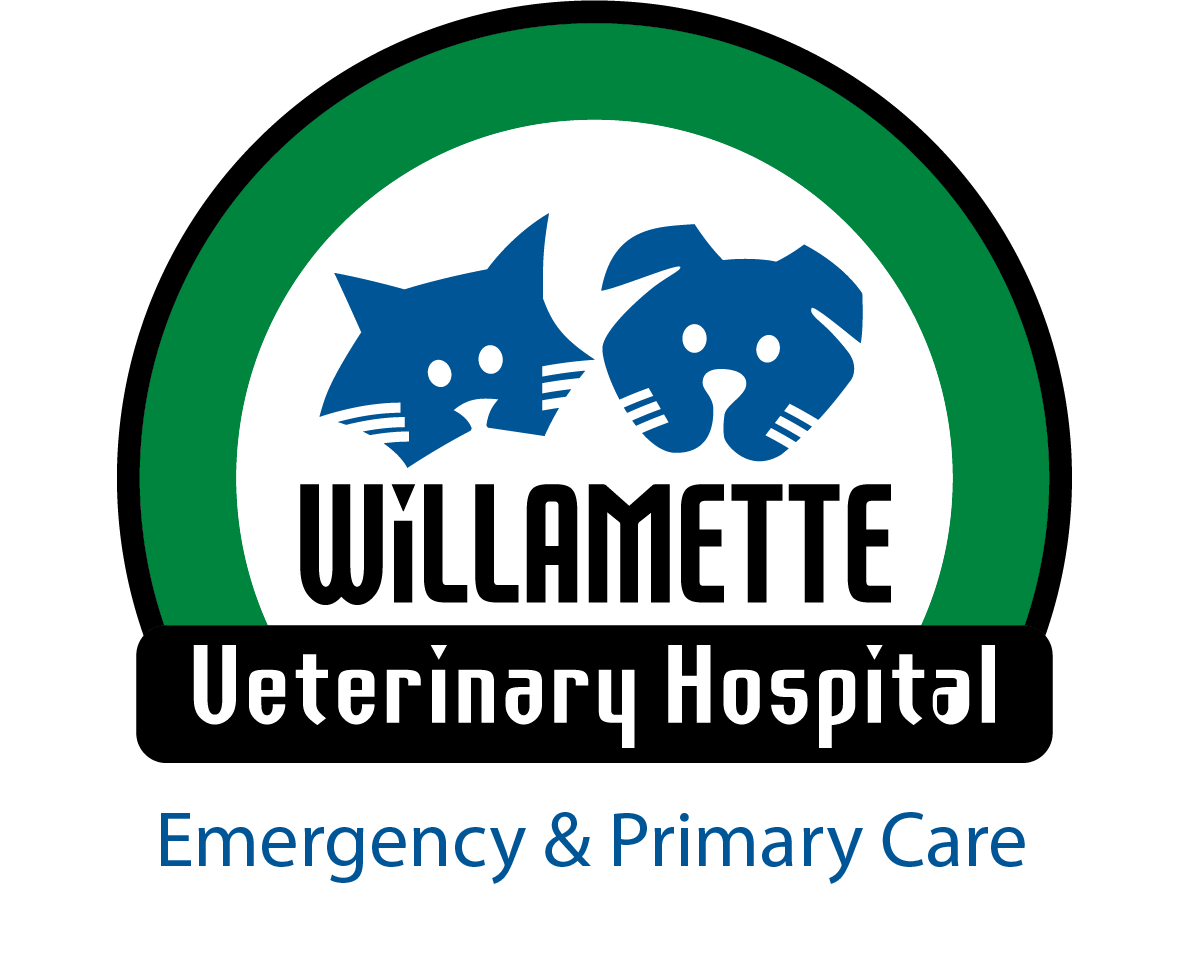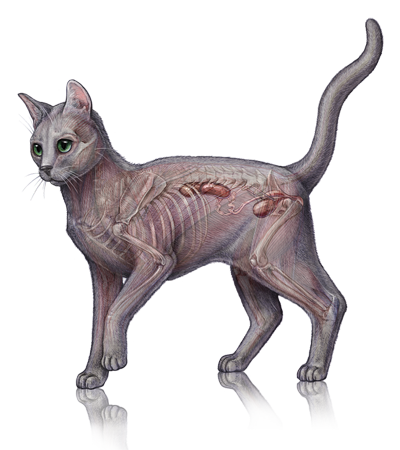
The urogenital system includes the urinary and reproductive organs.
The urinary system is divided into two regions based on anatomy and function: upper (kidneys and ureters) and lower urinary (urinary bladder and urethra) tracts. The upper urinary tract filters metabolic wastes from the blood to be excreted into the urine. The kidneys also participate in blood pressure regulation and maintenance of the delicate electrolyte and water balance within the body-keeping only what is needed. The lower urinary tract serves as a reservoir for urine (bladder) and a pathway for excretion (urethra). Indications of a urinary tract problem are varied: excessive urination and drinking, straining to urinate, blood in the urine, odor to urine, changes in litter box habits, vomiting, diarrhea, inappetance, incontinence, and lethargy.
The genital system consists of the reproductive organs: the uterus and ovaries. These organs produce hormones and allow reproduction. Signs associated with problems of the genital tract include: discharge, odor, straining to urinate and/or defecate, and lethargy.
Common urogenital ailments affecting cats:
- Lower urinary tract disease (LUTD): also known as Feline Urologic Syndrome (FUS). This common feline condition does not yet have a definitive cause. Male and female cats may be plagued with this condition. LUTD looks and acts like a urinary tract infection; however, there is no bacterial growth in the urine. Cats are inherently resistant to urinary tract infections because they produce highly concentrated urine. Significant urinary tract inflammation can occur to cause life threatening urinary tract obstruction.
- Kidney failure: acute and chronic. Acute kidney failure can be caused by infections, kidney stones, toxins, and drugs to name a few. Aging pets may develop chronic kidney failure. Often, by the time chronic kidney failure is diagnosed, the cause cannot be determined.
- Urinary bladder stones : some stones form due to the presence of infection; others form by mineral imbalances in the urine. Kidney stones are less common.
- Uterine infections (pyometra) : may occur in queens following a heat if pregnancy does not occur.
Bladder
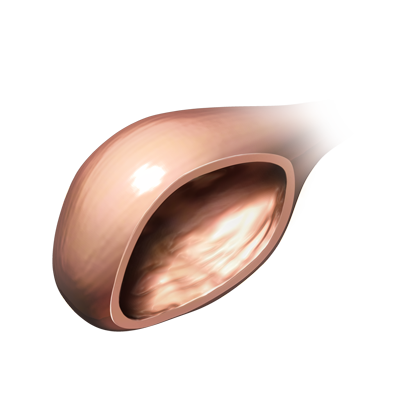
Urine, produced by the kidneys, is stored in the urinary bladder before exiting the body through the urethra. The urethra acts as a channel for urine excretion; its length offers protection against infection from the outside. Cats with urinary bladder inflammation (cystitis) strain to produce small amounts of urine (may appear as constipation), urinate outside the litter box, and may have blood in their urine. Common causes of urinary bladder inflammation include feline idiopathic interstitial cystitis and stones. Urinary tract infections affect cats less commonly due to their highly concentrated urine. An inability to urinate (straining with no urine production) requires emergency treatment to relieve the painful, life threatening obstruction.
Kidneys

The kidneys, lying just under the spinal column, receive nearly 25% of the blood pumped out of the heart. The kidneys maintain water and electrolyte balance, regulate blood pressure and provide an elimination route for toxins. Illness due to kidney disease may be due to infection, inflammation, toxin ingestion (e.g.: lilies and antifreeze), and cancer. Symptoms of kidney disease vary widely depending on the underlying cause. Cats with acute (sudden) kidney failure are quite ill: vomiting, lethargy, and anorexia. In contrast, cats with chronic (slow onset) kidney failure may not show any outward signs of a problem; the kidney disease is often incidentally found on screening lab work. Regular wellness testing with blood and urine evaluations allows early detection and treatment of kidney disease.
Pyometra
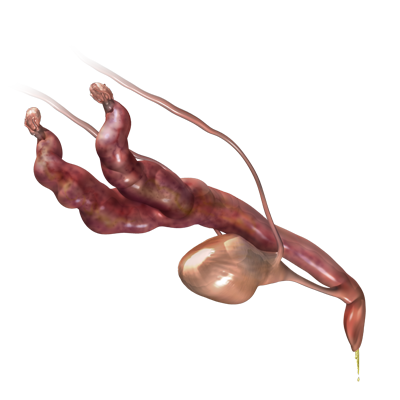
Pyometra refers to a life threatening infection of the uterus. All intact female dogs and cats that have not been spayed are at risk. Symptoms of pyometra develop several weeks following a heat cycle that did not result in pregnancy. Pets with pyometra may present for an increase in thirst and urination, lethargy, vomiting, fever, and a foul smelling vaginal discharge. Every sick intact female should be suspected of having pyometra; lack of a vaginal discharge does not rule out pyometra. Diagnosis of pyometra is based on history (usually 2 -3 months after a heat cycle), physical examination, and imaging studies (x-rays and/or ultrasound). Treatment for pyometra requires aggressive fluid therapy, antibiotics, and careful surgical removal of the infected uterus. The best treatment for pyometra is prevention through early spaying, before the first heat cycle occurs.
Spay
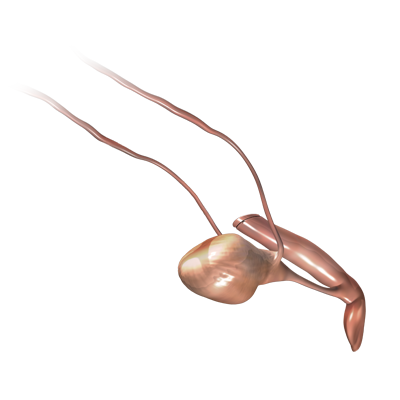
Female cats that will not be used for breeding should be spayed prior to the first heat cycle. Spaying is the surgical removal of both ovaries and the uterus to prevent unwanted pregnancies, life threatening uterine infections, and mammary cancer later in life. It is important to remember that the spay procedure is a major abdominal surgery and recovery time from surgery will be needed. Your recovering cat needs to be rested-no running or jumping as overactivity can lead to complications such as bleeding, infection, and breakdown of the incision.
Urogenital Normal
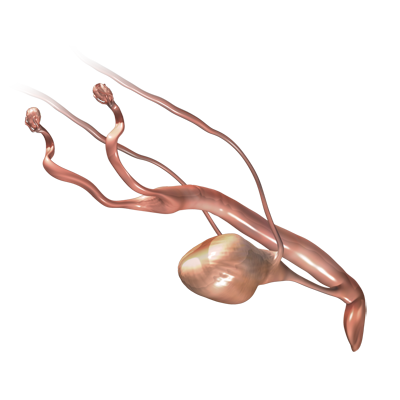
The reproductive tract of a female cat includes two ovaries and a two-horned uterus. Female cats not used for breeding should be spayed (surgical removal of the uterus and hormone-producing ovaries) to prevent nuisance behaviors, cat overpopulation, cancers, and potentially life threatening infections. Spaying your cat prior to the onset of the first estrous cycle significantly decreases your pet’s chances of developing mammary cancer later in life.
What's Next
Call us to schedule an appointment
Meet with a doctor for an initial exam.
Put a plan together for your pet.

